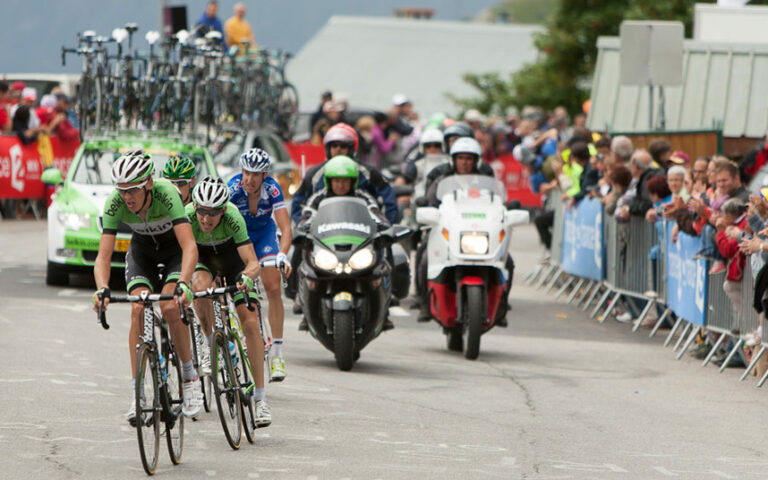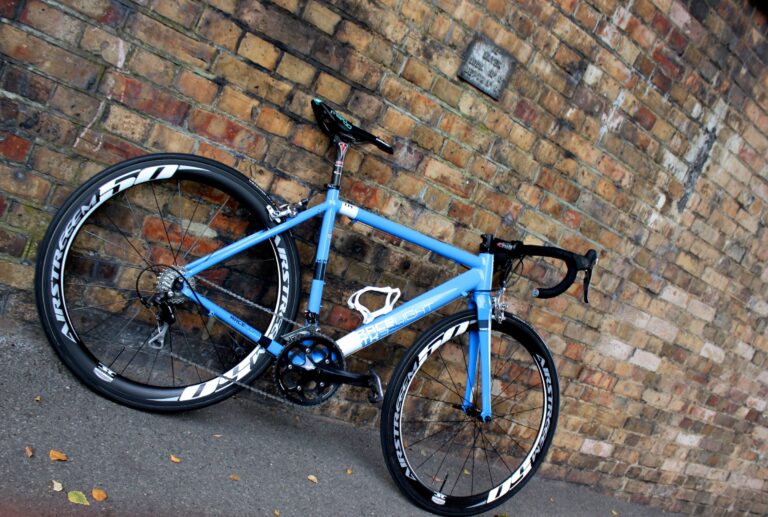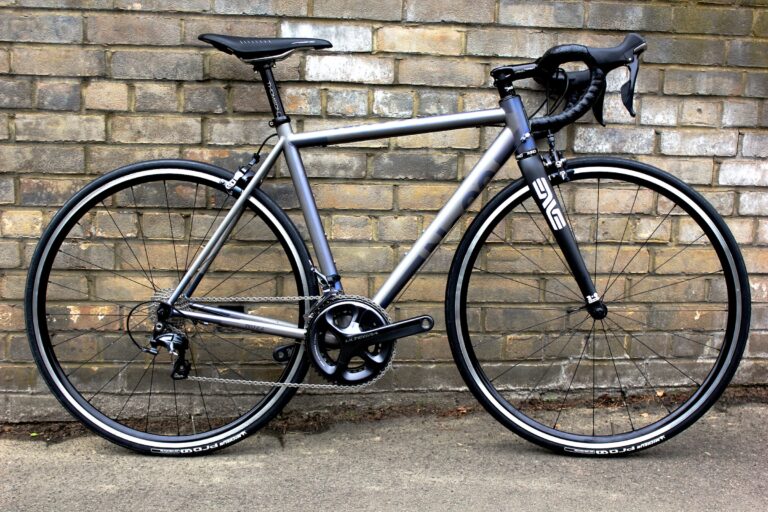What a difference a year makes.
Last year, we returned from Eurobike impressed by the volume of £1,000-ish aluminium bikes sporting a Shimano 105 groupset. This struck us as a good thing, and a subsequent test of the Cube Peloton Race confirmed our hunch.
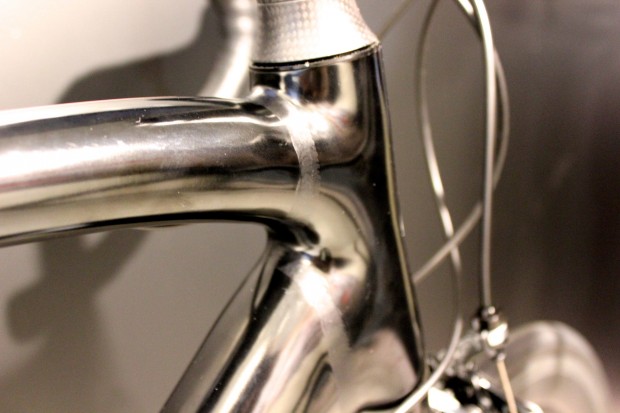
Aluminium bikes were still readily apparent among the sea of carbon at Eurobike 2013, but in addition to being an attractive alternative at the entry-level, we saw a variety of more sophisticated offerings. Aluminium is back in vogue.
Here’s further evidence, were it needed, that carbon fibre is far from the only material from which a bicycle can be made.
BMC Track Machine TR02
The carbon Track Machine TR01 is unquestionably the more sophisticated model, but it was the raw, 6069-series aluminium chassis of the TR02 that stopped us in our tracks as we passed BMC’s stand (one of similar scale to a shopping centre).
The flattened top tube, oversized down tube, and a seat-tube that tapers from a pyramidal shape at the bottom bracket are all striking features.
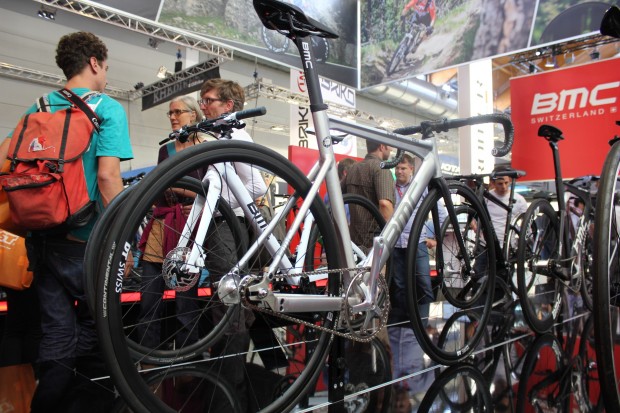
The bolt-in replaceable dropouts are made from stainless steel for additional durability (BMC’s alternative was an aluminium dropout with a steel insert, apparently), and the super shallow seat stays are something of a BMC signature.
The top-tier Shimano Dura Ace track groupset is further evidence of attention to detail, and extends as far as the hubs, which are laced to co-branded BMC-DT Swiss carbon rims shod with Continental Grand Prix TT tyres.
If you’re lucky enough to ride track sessions at Velo Suisse, the new Swiss national cycling centre, a facility opposite BMC’s headquarters in Grenchen, this is what you’ll be riding if you arrive sans bike – hardly an incentive to bring one of your own.
De Rosa Sessanta
De Rosa’s stand was the most impressive of any, in the humble opinion of your correspondent, displaying four ‘black label’ bikes (the badge afforded any product made in Italy, and typically associated with high-end Italian fashion), with one each made from carbon, titanium, steel, and aluminium, to celebrate the company’s sixtieth anniversary, hence ‘Sessanta’.
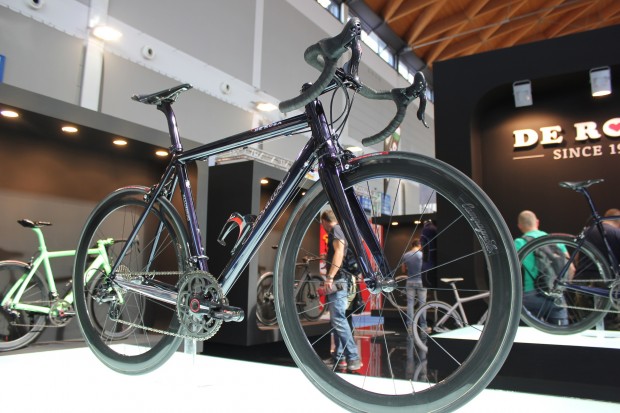
The Sessanta aluminium bike is made from Scandium aluminium. The absurdly smooth welds are achieved with the paint finish, rather than with polishing, to avoid weakening the weld, according to De Rosa’s man on the stand.
it contains several features of contemporary carbon bikes, including a press-fit bottom bracket (the more widely-adopted ’86’ standard, rather than Cannondale’s BB30), and a full carbon fork with tapered steerer.
Standard sizes are available, and De Rosa will also build the frame to bespoke measurements.
Specialized S-Works Allez
The first aluminium bike made for Specialized’s top tier in 10 years, the S-Works Allez represents the Morgan Hill concern’s return to alloy as a material for high-end bikes.
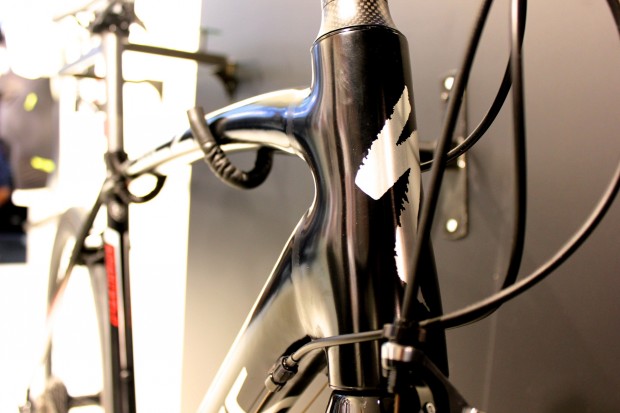
Why? Specialized’s engineers claim this is the first time they have been able to advance manufacture in aluminium, and to take it to a level to rival carbon in the weight stakes. The ride characteristic is, of course, entirely distinct from its composite brethern.
How have they made aluminium a competitor to carbon? Enter the Smartweld, a technology developed by Chris D’Aluisio (the man behind the Venge), in which a hydroformed top tube, down tube, and head tube are joined at a ‘seamless valley’ filled with weld material.
We were lucky enough to cast an eye across the S-Works Allez during our visit to the brand’s UK headquarters to preview the model year 2014 range, and judging by the crowd surrounding it at Eurobike, we’re not the only ones it has impressed.
Check back soon for our interview with the men behind this machine, and see the gallery below for detailed pictures of each of the bikes described above.

